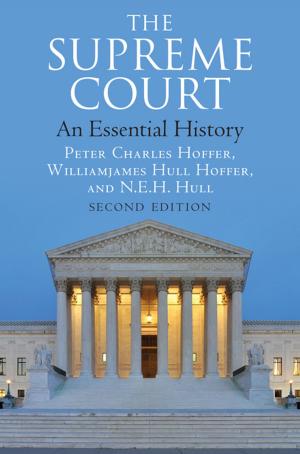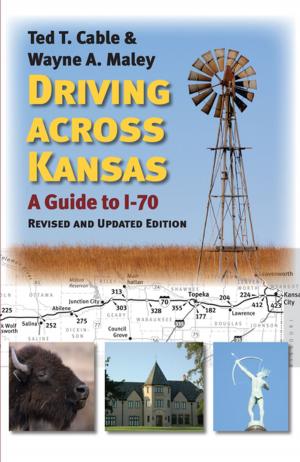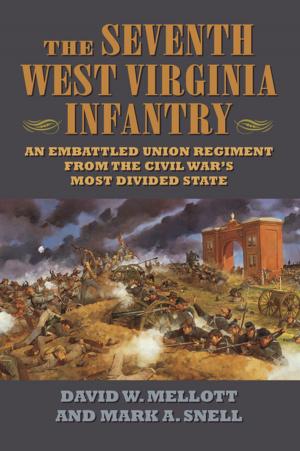Chief Executive to Chief Justice
Taft betwixt the White House and Supreme Court
Nonfiction, History, Americas, United States, 20th Century| Author: | Lewis L. Gould | ISBN: | 9780700620418 |
| Publisher: | University Press of Kansas | Publication: | December 3, 2014 |
| Imprint: | University Press of Kansas | Language: | English |
| Author: | Lewis L. Gould |
| ISBN: | 9780700620418 |
| Publisher: | University Press of Kansas |
| Publication: | December 3, 2014 |
| Imprint: | University Press of Kansas |
| Language: | English |
As our 27th president from 1909 to 1913, and then as chief justice of the Supreme Court from 1921 to 1930, William Howard Taft was the only man ever to lead two of America's three governing branches. But between these two well-documented periods in office, there lies an eight-year patch of largely unexplored political wilderness. It was during this time, after all, that Taft somehow managed to rise from his ignominious defeat by both Woodrow Wilson and Theodore Roosevelt in the 1912 election to achieve his lifelong goal of becoming chief justice. In the first in-depth look at this period in Taft's singular career, eminent presidential historian Lewis L. Gould reveals how a man often derided for his lack of political acumen made his way through the hazards of Republican affairs to gain his objective.
In the years between the presidency and the Supreme Court Taft was, as one commentator observed, "the greatest of globe trotters for humanity." Gould tracks him as he crisscrosses the country from 1913 through the summer of 1921, the inveterate traveler reinventing himself as an elder Republican statesman with no visible political ambition beyond informing and serving the public. Taft was, however, working the long game, serving on the National War Labor Board, fighting for the League of Nations, teaching law and constitutional history at Yale, making up his differences with Roosevelt, all while negotiating the Republican Party's antipathy and his own intense dislike of Woodrow Wilson, whose wartime policies and battle for the league he was bound to support. Throughout, his judicial ambition shaped his actions, with surprising adroitness.
This account of Taft's journey from the White House to the Supreme Court fills a large gap in our understanding of an important American politician and jurist. It also discloses how intricate and complicated public affairs had become during the era of World War I and its aftermath, an era in which William Howard Taft, as a shrewd commentator on the political scene, a resourceful practitioner of party politics, and a man of consummate ambition, made a significant and lasting mark.
As our 27th president from 1909 to 1913, and then as chief justice of the Supreme Court from 1921 to 1930, William Howard Taft was the only man ever to lead two of America's three governing branches. But between these two well-documented periods in office, there lies an eight-year patch of largely unexplored political wilderness. It was during this time, after all, that Taft somehow managed to rise from his ignominious defeat by both Woodrow Wilson and Theodore Roosevelt in the 1912 election to achieve his lifelong goal of becoming chief justice. In the first in-depth look at this period in Taft's singular career, eminent presidential historian Lewis L. Gould reveals how a man often derided for his lack of political acumen made his way through the hazards of Republican affairs to gain his objective.
In the years between the presidency and the Supreme Court Taft was, as one commentator observed, "the greatest of globe trotters for humanity." Gould tracks him as he crisscrosses the country from 1913 through the summer of 1921, the inveterate traveler reinventing himself as an elder Republican statesman with no visible political ambition beyond informing and serving the public. Taft was, however, working the long game, serving on the National War Labor Board, fighting for the League of Nations, teaching law and constitutional history at Yale, making up his differences with Roosevelt, all while negotiating the Republican Party's antipathy and his own intense dislike of Woodrow Wilson, whose wartime policies and battle for the league he was bound to support. Throughout, his judicial ambition shaped his actions, with surprising adroitness.
This account of Taft's journey from the White House to the Supreme Court fills a large gap in our understanding of an important American politician and jurist. It also discloses how intricate and complicated public affairs had become during the era of World War I and its aftermath, an era in which William Howard Taft, as a shrewd commentator on the political scene, a resourceful practitioner of party politics, and a man of consummate ambition, made a significant and lasting mark.















